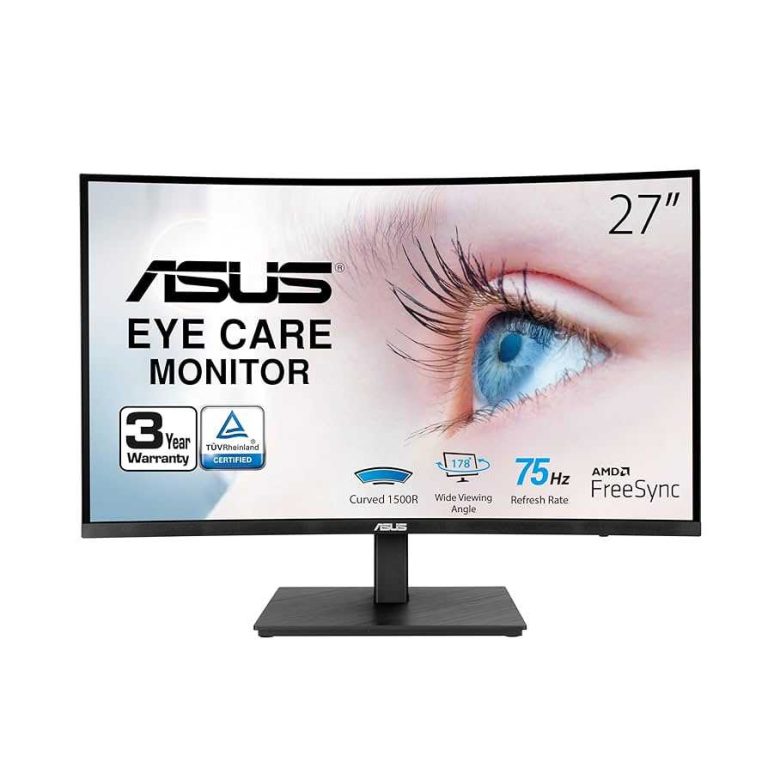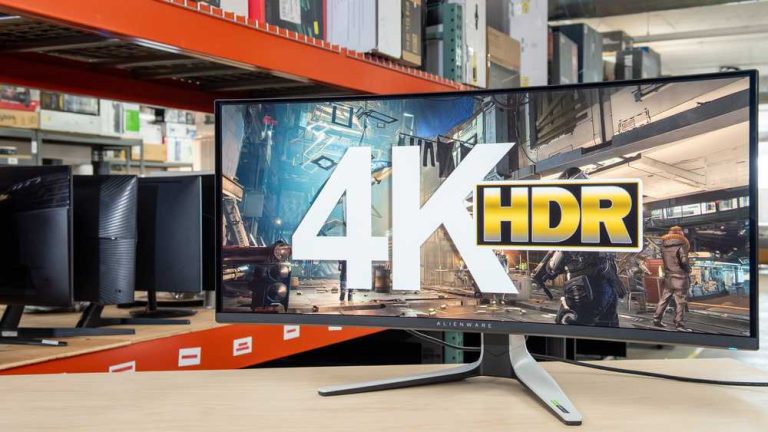To fix dual monitor flickering quickly, start by checking and updating your graphics drivers, ensuring all connections are secure, and adjusting your display refresh rate to match your monitor’s specifications. These simple steps can often resolve flickering issues and restore smooth visuals. If problems persist, explore further troubleshooting such as changing cables or adjusting display settings.
Flickering dual monitors can be incredibly frustrating, especially when you rely on your multi-screen setup for work or entertainment. The good news is that most flickering problems are caused by easily fixable issues like outdated drivers, loose connections, or incompatible refresh rates. By systematically troubleshooting these common causes, you can enjoy a stable, flicker-free display and boost your productivity or viewing experience. Let’s walk through the best solutions to eliminate that annoying flickering and get your dual monitors working seamlessly again.
How to Fix Dual Monitor Flickering Problem
Understanding the Causes of Dual Monitor Flickering
Flickering screens can be frustrating and confusing. Many issues lead to this problem, and understanding them helps in fixing the flickering quickly. Some common causes include unstable graphics drivers, faulty cables, incompatible monitors, or incorrect display settings. Pinpointing the root cause makes troubleshooting more efficient.
Check Your Cables and Connections
Loose or damaged cables are often the main reason behind flickering monitors. Ensure that all cables connecting your monitors to the computer are secure. Inspect the cables for any visible damage such as bends, tears, or frays. Consider replacing old or damaged cables to see if the flickering stops. Use high-quality HDMI, DisplayPort, or DVI cables for better stability.
Steps to Verify and Replace Cables
- Turn off your computer and monitors.
- Disconnect all monitor cables from your PC and monitors.
- Inspect cables for visible damage.
- Reconnect cables securely, ensuring they click into place.
- If flickering persists, replace cables with new, high-quality ones.
Update and Reinstall Graphics Drivers
Outdated or corrupted graphics drivers can cause flickering issues. Updating drivers ensures compatibility with your operating system and monitors. Sometimes reinstalling drivers fixes corrupted files. Always download drivers from the official manufacturer’s website for best results.
How to Update Graphics Drivers
- Open Device Manager by pressing Windows + X and selecting Device Manager.
- Locate your display adapter under the Display adapters section.
- Right-click the adapter and select Update Driver.
- Choose Search automatically for updated driver software.
- Follow on-screen instructions to complete the update.
Reinstall Graphics Drivers
- Download the latest driver package from the GPU manufacturer’s website.
- Uninstall current drivers via Device Manager or through the Control Panel.
- Restart your computer.
- Run the downloaded installer and follow prompts to install new drivers.
- Restart again to complete the installation process.
Adjust Display Settings for Dual Monitors
Incorrect display settings can lead to flickering or other display issues. Properly configuring resolution and refresh rates is essential for stable performance. Use the display settings in your operating system to optimize each monitor individually.
Steps to Correct Display Settings
- Right-click on your desktop and select Display Settings.
- Select each monitor and set the recommended resolution.
- Set the refresh rate to the highest supported value, usually found under Advanced Display Settings.
- Ensure both monitors are using the same color depth and scaling options if necessary.
- Apply changes and observe if flickering persists.
Configure Refresh Rate Settings Properly
A mismatched or unsupported refresh rate can cause flickering. Make sure your monitors operate at their native or recommended rate. Check the specifications of your monitors and your graphics card to confirm compatibility.
How to Change Refresh Rate
- Open Display Settings and select Advanced Display Settings.
- Click on Display Adapter Properties for each monitor.
- Navigate to the Monitor tab.
- Choose the highest supported refresh rate for your monitor.
- Click Apply and test for flickering.
Disable Hardware Acceleration
Hardware acceleration can sometimes cause flickering, especially in browsers or certain applications. Disabling it can eliminate flickering caused by software conflicts.
Disabling Hardware Acceleration in Common Applications
- In Google Chrome, go to Settings > Advanced > System and toggle off Use hardware acceleration when available.
- In Mozilla Firefox, type about:preferences#performance in the address bar, uncheck Use recommended performance settings, then uncheck Use hardware acceleration when available.
- Restart the application to see if flickering stops.
Update Motherboard and Chipset Drivers
Sometimes flickering is caused by outdated motherboard or chipset drivers that manage display outputs. Check your motherboard manufacturer’s website for the latest drivers and install them accordingly.
Steps to Update Motherboard Drivers
- Visit your motherboard manufacturer’s support page.
- Download the latest chipset and driver software for your model.
- Follow installation instructions provided by the manufacturer.
- Restart your system to apply updates.
Check for Monitor Compatibility and Firmware Updates
Incompatible monitors or outdated firmware can lead to flickering. Visit the monitor manufacturer’s website to verify compatibility and look for firmware updates. Follow instructions carefully to update monitor firmware if applicable.
Steps for Firmware Updates
- Download firmware update files from the manufacturer’s website.
- Follow their specific instructions for updating firmware safely.
- Ensure the monitor remains powered during the update process.
- Restart the monitor after updating and check for flickering issues.
Disable V-Sync and Other Synchronization Settings
V-Sync and other synchronization features sometimes cause flickering. Try disabling these options in your graphics card control panel or game settings to see if flickering improves.
Disabling V-Sync in Graphics Card Control Panel
- Open your graphics control panel (NVIDIA Control Panel or AMD Radeon Settings).
- Navigate to Manage 3D Settings.
- Locate V-Sync and set it to Off.
- Apply changes and test for flickering.
Test Different Ports and Graphics Cards
Using different video ports on your graphics card or switching to another graphics card can help identify hardware issues. Sometimes, a faulty port or GPU causes display flickering.
Steps to Test Hardware
- Connect your monitors to different ports on your graphics card.
- Test for flickering after each change.
- If available, try using a different graphics card.
- Check if flickering persists across different configurations.
Check for Power Supply and Electrical Interference
Inconsistent power supply or electrical interference can cause monitor flickering. Use a surge protector and ensure your power outlet supplies stable voltage. Avoid connecting monitors to shared power strips with other high-power appliances.
Tips for Power Stability
- Plug your monitors directly into a wall outlet if using power strips.
- Use a surge protector to guard against voltage fluctuations.
- Avoid extension cords for powering monitors.
Additional Tips for Preventing Flickering
Besides troubleshooting steps, regular maintenance helps prevent flickering. Keep your system free from dust, ensure all drivers are up to date, and maintain a stable working environment.
Regular Maintenance Suggestions
- Clean dust from your PC and monitors periodically.
- Update drivers at least once every few months.
- Use reliable power sources to ensure consistent electrical flow.
- Periodically check cables and connections for wear and tear.
Efficiently addressing dual monitor flickering involves a combination of hardware checks, software updates, and display configuration. Taking these steps systematically can restore stable, flicker-free screens and improve your overall computer experience.
Screen Flickering? 🖥️ Here Are 4 Fixes You NEED to Try! 🔧
Frequently Asked Questions
What steps can I take to ensure my cables are properly connected to prevent flickering?
Check all video cables connecting your monitors to your computer. Ensure they are securely plugged in and free from damage. Swap out any damaged cables with new ones to eliminate potential connection issues. Using high-quality cables can also reduce signal interference that leads to flickering.
How can updating my graphics driver help resolve dual monitor flickering?
Visit the manufacturer’s website of your graphics card and download the latest driver updates. Installing the newest drivers often includes fixes for bugs that cause display issues like flickering. After updating, restart your computer and verify if the flickering issue persists.
What display settings should I check to fix flickering on my monitors?
Adjust the refresh rate and resolution for each monitor through your display settings. Set both monitors to their recommended settings and ensure the refresh rate matches their specifications. Incorrect settings here can cause flickering, so aligning them properly helps improve stability.
Can changing the cables or ports help eliminate flickering?
Yes, using different cables or switching to alternative ports on your computer can resolve flickering caused by faulty connections. Try connecting each monitor via different ports (such as HDMI, DisplayPort, or VGA) and see if the flickering stops. Ensuring compatibility and stability in connections makes a difference.
How can adjusting the monitor’s refresh rate reduce flickering issues?
Open your display settings and navigate to advanced display options. From there, select a higher, compatible refresh rate for your monitors. Increasing the refresh rate reduces flickering by providing smoother image updates, but make sure your monitors support the chosen setting to avoid other display problems.
Final Thoughts
To fix dual monitor flickering problem, start by checking your video drivers and update them if needed. Ensure your cables are securely connected and try replacing any damaged ones. Adjust your monitor refresh rate settings to match the specifications recommended by the manufacturer.
If flickering persists, try changing the display settings or switching to a different port. Restart your computer and disable any unnecessary background applications.
In conclusion, resolving the dual monitor flickering problem involves updating drivers, checking connections, and adjusting settings. These steps help ensure your displays work smoothly and reliably.

With experience in IT support and consumer technology, I focus on step-by-step tutorials and troubleshooting tips. I enjoy making complex tech problems easy to solve.





